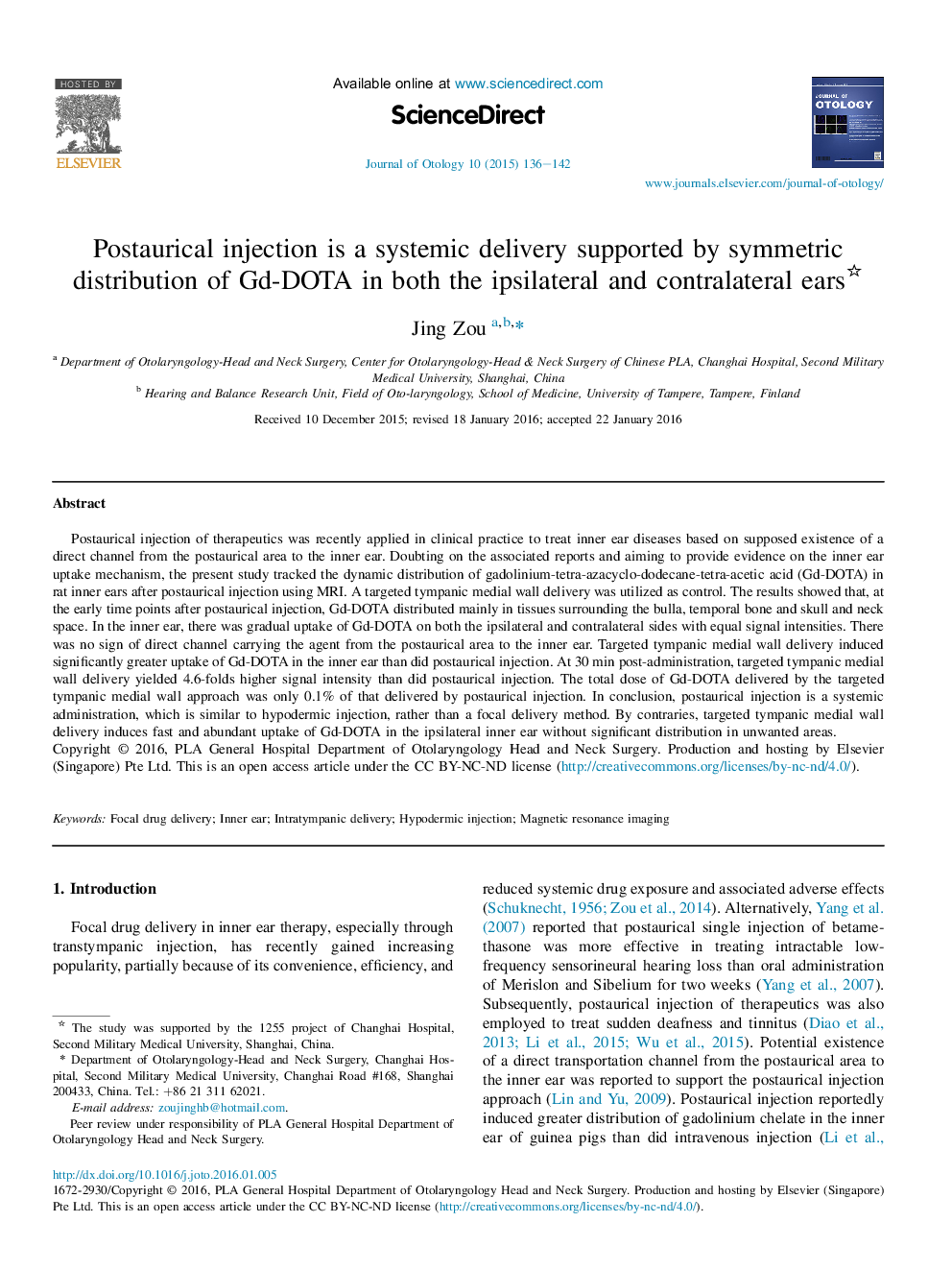| Article ID | Journal | Published Year | Pages | File Type |
|---|---|---|---|---|
| 4116623 | Journal of Otology | 2015 | 7 Pages |
Postaurical injection of therapeutics was recently applied in clinical practice to treat inner ear diseases based on supposed existence of a direct channel from the postaurical area to the inner ear. Doubting on the associated reports and aiming to provide evidence on the inner ear uptake mechanism, the present study tracked the dynamic distribution of gadolinium-tetra-azacyclo-dodecane-tetra-acetic acid (Gd-DOTA) in rat inner ears after postaurical injection using MRI. A targeted tympanic medial wall delivery was utilized as control. The results showed that, at the early time points after postaurical injection, Gd-DOTA distributed mainly in tissues surrounding the bulla, temporal bone and skull and neck space. In the inner ear, there was gradual uptake of Gd-DOTA on both the ipsilateral and contralateral sides with equal signal intensities. There was no sign of direct channel carrying the agent from the postaurical area to the inner ear. Targeted tympanic medial wall delivery induced significantly greater uptake of Gd-DOTA in the inner ear than did postaurical injection. At 30 min post-administration, targeted tympanic medial wall delivery yielded 4.6-folds higher signal intensity than did postaurical injection. The total dose of Gd-DOTA delivered by the targeted tympanic medial wall approach was only 0.1% of that delivered by postaurical injection. In conclusion, postaurical injection is a systemic administration, which is similar to hypodermic injection, rather than a focal delivery method. By contraries, targeted tympanic medial wall delivery induces fast and abundant uptake of Gd-DOTA in the ipsilateral inner ear without significant distribution in unwanted areas.
